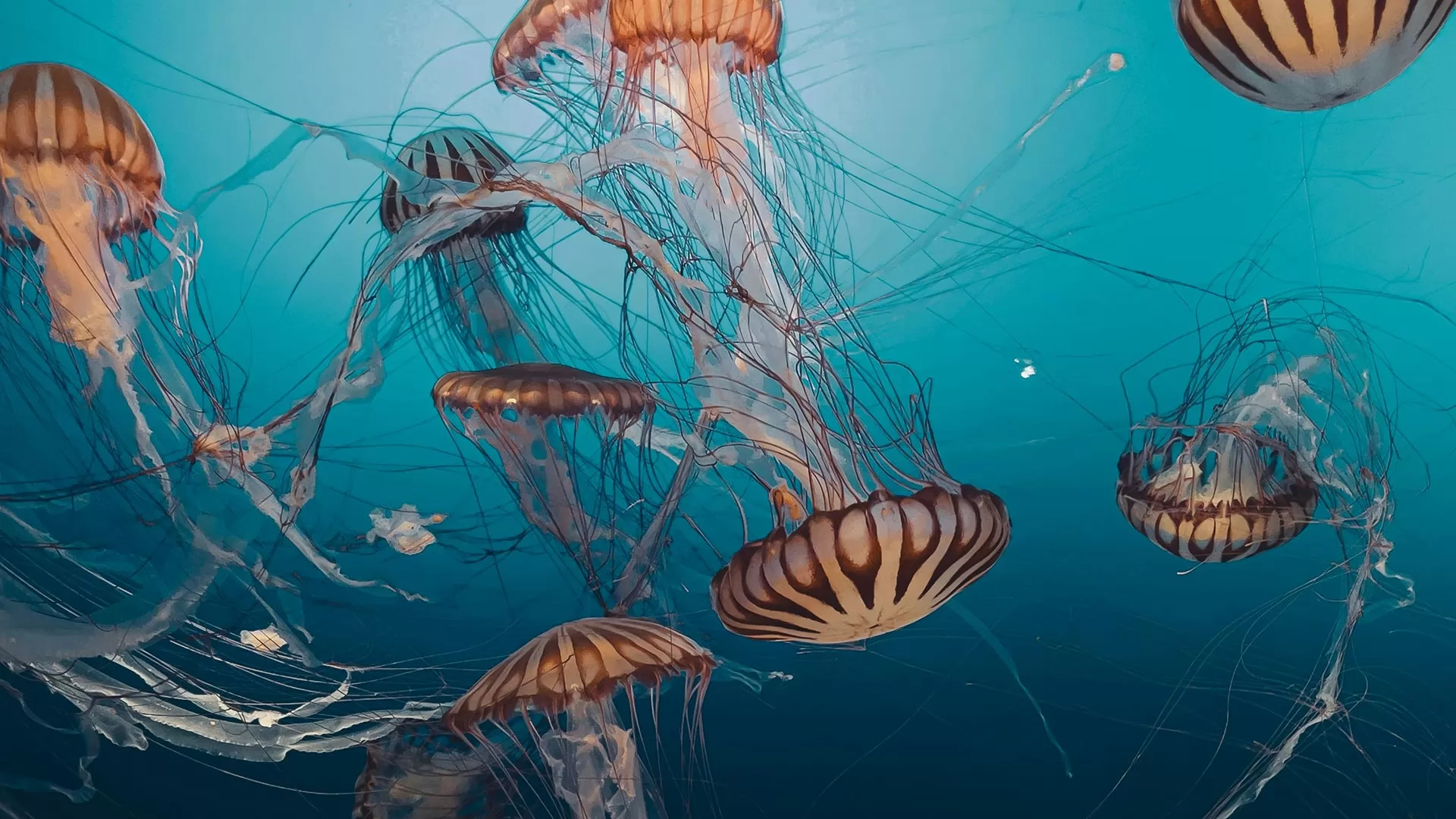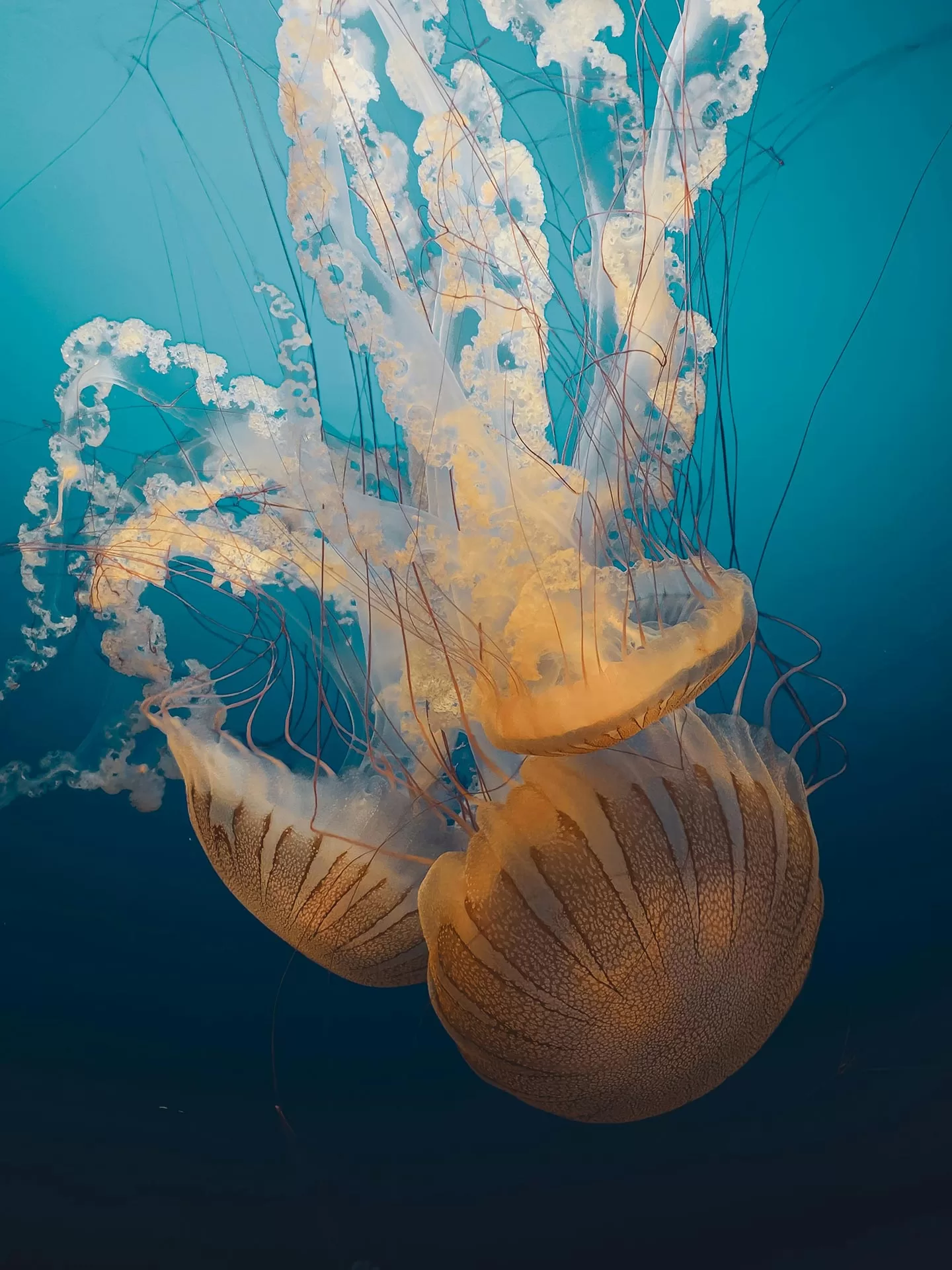
Bioluminescently queer
Defying human-centric conventions: a maritime odyssey into trans-corporeality
by Zoë De Luca Legge
Photo by Laura Nyhuis / Unsplash
Queer ecology, referring to creatures questioning traditional understandings of identity, sexuality, and family, makes sea jellies icons of this framework in their own right. Challenging established norms and manifesting a radical departure from the human-centric worldview, they lie amidst the dance of currents living their quiet marine life, often overlooked and misunderstood. Sea jellies hold a wealth of deepness beneath their seemingly simple veneer — a mere translucent blob to many, so we didn’t even bother to give them a name that matches their kind.
Medusae challenge conventional notions of intelligence and consciousness, demonstrating that complex cognition is not a prerequisite for profound insight. Despite lacking traditional brain systems made of complex neural networks, they rely on decentralized nerve nets and sensory structures to perceive their environment and coordinate basic behaviors. They reveal a distinctive ability to learn by reading light movements and variations, attuning to the subtle rhythms of their marine surroundings.
An observer who makes their interactions with the world a ritual bordering on divination. A polite interlocutor who communicates with delicate, bioluminescent gestures, proving how many different forms of intelligence can manifest themselves in the animal kingdom.
Boneless, bloodless, brainless. Medusozoans lead a nomadic existence guided by the pursuit of essential needs and the transient company of their kin. Heralds of simplicity, their gelatinous bodies, and hypnotizing locomotion epitomize a lifestyle free from the greedy, overcomplicatedness dominating most ecosystems. Amidst a world consumed by the relentless quest for more, devoid of ambition or competitiveness, they also often blend individual needs with collective well-being. Undoubtedly the most baroque basibionts of the ocean depths, jellyfish embody the essence of coexistence and mutual support by acting as hosts for a myriad of symbiotic organisms. They provide refuge for juvenile fish, crustaceans, and other marine organisms under their gelatinous bodies, making the best of the 5 percent that separates them from being composed entirely of water. The shelter their bell supplies protects them from predators and strong currents and provides access to food resources. While their bell has a smooth surface ideal for attachment, its transparency allows sunlight to penetrate, enabling photosynthesis, algae growth, and other food sources that attract potential epibionts. A stable environment conducive to settling different organisms is ideal, thanks to their slow, rhythmic pulsations.

Photo by Laura Nyhuis / Unsplash
In return, epibionts beneath their often flamboyant bells also benefit them. Some epibionts’ diet consumes debris or parasites that accumulate on the sea jelly’s surface, while others’ appearance deters predators or provides camouflage, enhancing the sea jelly’s survival. A creature seamlessly integrated with their aquatic environment, evolved by the awareness of the interconnections that sustain it. An example of the thick web of mutual relationships that sustains life in the ocean.
Yet, even before manifesting itself in symbiotic community politics, queerness comes from identity and the way animals experience sexuality and relationships. While sea jellies do not experience gender in the same sense as humans, they exhibit various reproductive strategies, many of which involve changing their reproductive roles and ways. Drifting aimlessly through the vast expanse of water, most jellyfish can perform sequential hermaphroditism, which allows them to change their sex during their lifetime. But that’s not the only form of reproductive flexibility this organism can accomplish. Some species are capable of both sexual reproduction, where eggs and sperm are released into the water for external fertilization, and asexual reproduction, where individuals can clone themselves. This happens through budding, where they form small polyps that will develop into new, umbrella-shaped adults; or fragmentation, where they intentionally break into small pieces that regenerate and develop into a complete, genetically identical individual. Unchanged for hundreds of millions of years, they glide their way through oceans.
Similarly to human queer communities, sea jellies have longly exhibited remarkable adaptive resilience, as illustrated by their unique life cycle and evolutionary strategies. Through transdifferentiation, a process that reverses aging by rejuvenating biological vitality, several species can revert to earlier developmental stages, becoming virtually immortal. As we hustle our mortal journey towards an unknown end, sea jellies placidly transdifferentiate through theirs. They forever remind us how our conception of nature actually sinks roots in an oversimplified version we described just to be able to grasp it ourselves, and how the odd idea that something truly unnatural can exist has limited our own worldbuilding.



 in Italy
in Italy